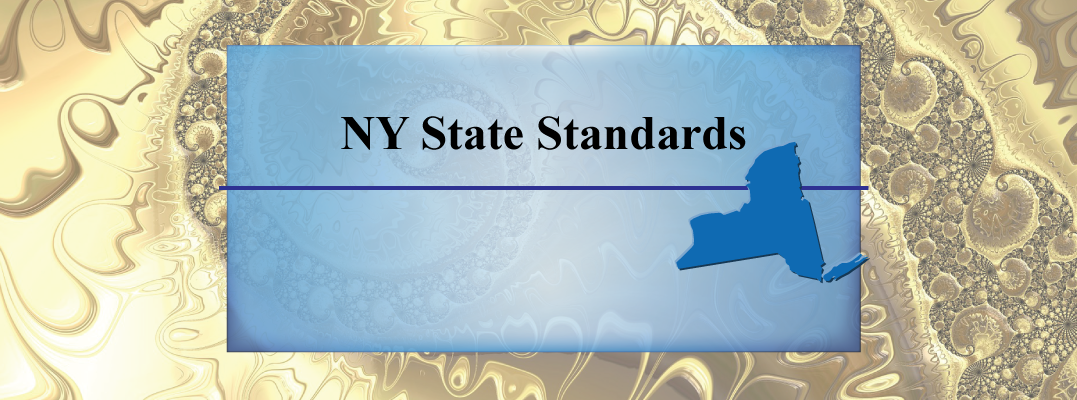
These are the resources that support this NYS Standard.
NY-GEO-G.MG.2: Apply concepts of density based on area and volume of geometric figures in modeling situations.
There are 140 resources.| Title | Description | Thumbnail Image | Curriculum Topics |
|---|---|---|---|
VIDEO: Geometry Applications: 3D Geometry, 1 |
VIDEO: Geometry Applications: 3D Geometry, Segment 1: Introduction.
We visit ancient Greece to learn about the Platonic Solids. This provides an introduction to the more general topic of three-dimensional figures. |

|
3-Dimensional Figures |
VIDEO: Geometry Applications: 3D Geometry, 2 |
VIDEO: Geometry Applications: 3D Geometry, Segment 2: Pyramids
Rectangular Prisms. Mayan pyramids are essentially stacks of rectangular prisms. The volume of each successive level is a percentage decrease of its lower neighbor. This introduces the notion of a geometric sequence and series, including an infinite series. |
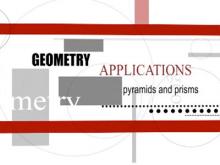
|
3-Dimensional Figures and Pyramids |
VIDEO: Geometry Applications: 3D Geometry, 3 |
VIDEO: Geometry Applications: 3D Geometry, Segment 3: Cylinders
The Shanghai Tower in China is a stack of cylindrical shapes, where each successive layer is a percentage decrease of its lower neighbor. As with the previous section, this introduces the notion of a geometric sequence and series. |
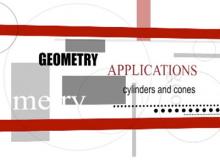
|
3-Dimensional Figures and Cylinders |
VIDEO: Geometry Applications: Angles and Planes |
VIDEO: Geometry Applications: Angles and Planes
In this program we explore the properties of angles and planes. We do this in the context of two real-world applications. In the first, we explore Japan's Himeji Castle and in the process learn about different types of angles and how they're used in a defensive fortification. |
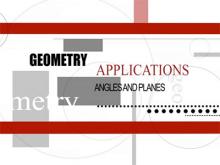
|
Applications of Angles and Planes |
VIDEO: Geometry Applications: Angles and Planes, 1 |
VIDEO: Geometry Applications: Angles and Planes, Segment 1: Introduction
The observatory in Arecibo, Puerto Rico provides astronomers insights into the structure of our solar system. Geometrically, the solar system relies on the plane known as the ecliptic. |
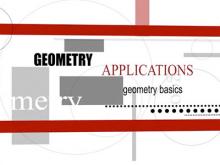
|
Applications of Angles and Planes |
VIDEO: Geometry Applications: Angles and Planes, 2 |
VIDEO: Geometry Applications: Angles and Planes, Segment 2: Angles
Himeji castle in Japan is a marvel of architecture and a startling example of geometry and military science. |
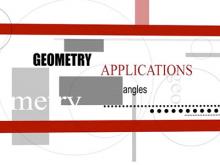
|
Applications of Angles and Planes |
VIDEO: Geometry Applications: Angles and Planes, 3 |
VIDEO: Geometry Applications: Angles and Planes, Segment 3: Planes
In the Canadian Rockies, the Burgess Shale fossils provide a window to prehistoric Earth. Fossil layers are folded into sedimentary rocks. And sedimentary rocks are examples of parallel planes. This segment uses the properties of planes to analyze fossils. |
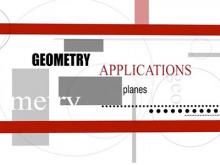
|
Applications of Angles and Planes |
VIDEO: Geometry Applications: Area and Volume |
VIDEO: Geometry Applications: Area and Volume
In this program we look at applications of area and volume. We do this in the context of three real-world applications. In the first, we look at the sinking of the Titanic in the context of volume and density. |

|
Applications of Surface Area and Volume, Surface Area and Volume |
VIDEO: Geometry Applications: Area and Volume, 1 |
VIDEO: Geometry Applications: Area and Volume, Segment 1: Volume and Density.
The sinking of the Titanic provides an opportunity to explore volume, density, and buoyancy. Students construct a mathematical model of the Titanic to determine why it sank and what could have been done to prevent it from sinking. |
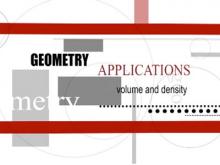
|
Applications of Surface Area and Volume, Surface Area and Volume |
VIDEO: Geometry Applications: Area and Volume, 2 |
VIDEO: Geometry Applications: Area and Volume, Segment 2: Surface Area.
The glass-paneled pyramid at the Louvre Museum in Paris is a tessellation of rhombus-shaped glass panels. Students create a model of the pyramid to calculate the number of panels used to cover the surface area of the pyramid. |
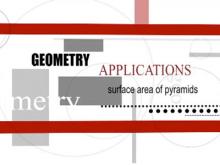
|
Applications of Surface Area and Volume, Surface Area and Volume |
VIDEO: Geometry Applications: Area and Volume, 3 |
VIDEO: Geometry Applications: Area and Volume, Segment 3: Ratio of Surface Area to Volume.
The Citibank Tower in New York City presents some unique design challenges. In addition it has to cope with a problem that all tall structure have to deal with: heat loss. |
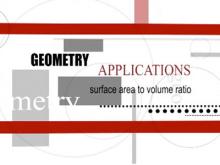
|
Applications of Surface Area and Volume, Surface Area and Volume |
VIDEO: Geometry Applications: Circles |
VIDEO: Geometry Applications: Circles
In this program we explore the properties of circles. We do this in the context of two real-world applications. In the first, we look at the design of the Roman Coliseum and explore how circular shapes could have been used to design this elliptical structure. |

|
Applications of Circles |
VIDEO: Geometry Applications: Circles, 1 |
VIDEO: Geometry Applications: Circles, Segment 1: The Basics of Circles.
We visit Chaco Canyon in New Mexico to explore the circular kivas and in the process discover how circular buildings have been used to study the heavens. |
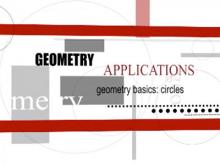
|
Applications of Circles |
VIDEO: Geometry Applications: Circles, 2 |
VIDEO: Geometry Applications: Circles, Segment 2: Circles and Arcs.
The Roman Coliseum is a large elliptical structure. Yet, the Romans likely used circular arcs to build it. This segment explores the properties of circles and shows how arcs can be used to create elliptical shapes. |
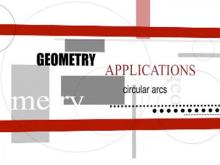
|
Applications of Circles and Definition of a Circle |
VIDEO: Geometry Applications: Circles, 3 |
VIDEO: Geometry Applications: Circles, Segment 3: Chords and Inscribed Angles
The Roman Pantheon is a domed structure that shows a keen awareness of the position of the sun throughout the year. The source of light from the top of the dome allows for the exploration of chords, inscribed angles, central angles, and intercepted arcs. |
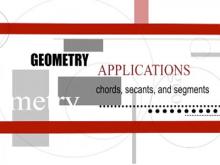
|
Applications of Circles and Definition of a Circle |
VIDEO: Geometry Applications: Coordinate Geometry |
VIDEO: Geometry Applications: Coordinate Geometry
In this program we look at applications of coordinate geometry. We do this in the context of three real-world applications. In the first, we look at longitude and latitude as a spherical coordinate system for navigation. |
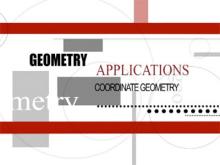
|
Applications of Coordinate Geometry and Coordinate Systems |
VIDEO: Geometry Applications: Coordinate Geometry, 1 |
VIDEO: Geometry Applications: Coordinate Geometry, Segment 1: Longitude and Latitude.
Greenwich, England, is the location of the Prime Meridian and offers a point of departure for a discussion of the longitude and latitude coordinate system. |
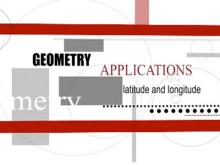
|
Applications of Coordinate Geometry and Coordinate Systems |
VIDEO: Geometry Applications: Coordinate Geometry, 2 |
VIDEO: Geometry Applications: Coordinate Geometry, Segment 2: Rectangular Coordinates.
Centuries ago a Spanish galleon, The Atocha, sank off the coast of Florida, taking its gold treasure down with it. Aside from the technology used to recover the treasure, it was a rectangular coordinate system that made such an endeavor possible. |
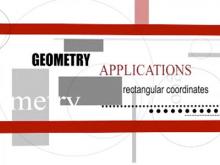
|
Applications of Coordinate Geometry and Coordinate Systems |
VIDEO: Geometry Applications: Coordinate Geometry, 3 |
VIDEO: Geometry Applications: Coordinate Geometry, Segment 3: Polar Coordinates.
The Guggenheim Museum in New York City has a spiral shape that is an example of a polar coordinate graph. This shape, found often in nature, is a way to understand the Fibonacci Sequence. |
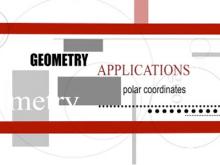
|
Applications of Coordinate Geometry and Coordinate Systems |
VIDEO: Geometry Applications: Points and Lines |
VIDEO: Geometry Applications: Points and Lines
In this program we explore the properties of points and lines. We do this in the context of two real-world applications. In the first, we go to CERN and learn about the Large Hadron Collidor. We look at how points can represent particle positions in space and look at properties of points and lines. |
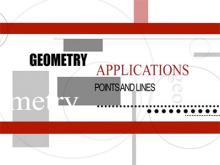
|
Applications of Points and Lines, Definition of a Line and Definition of a Point |
VIDEO: Geometry Applications: Points and Lines, 1 |
VIDEO: Geometry Applications: Points and Lines, Segment 1: Introduction
Our understanding of geometry owes much to the ancient Greeks. We visit the ancient Acropolis and explore some of its geometric secrets. |
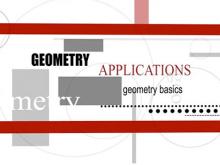
|
Applications of Points and Lines, Definition of a Line and Definition of a Point |
VIDEO: Geometry Applications: Points and Lines, 2 |
VIDEO: Geometry Applications: Points and Lines, Segment 2: Points
Geometric objects are abstractions that seem to have a connection to real world objects. |
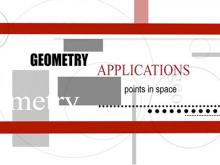
|
Applications of Points and Lines, Definition of a Line and Definition of a Point |
VIDEO: Geometry Applications: Points and Lines, 3 |
VIDEO: Geometry Applications: Points and Lines, Segment 3: Lines
Many cities are laid out in a rectangular grid and are examples of intersecting lines and rays. We visit the city of Houston to investigate the geometric nature of the city grid in its downtown area. |
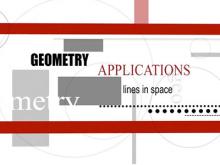
|
Applications of Points and Lines, Definition of a Line and Definition of a Point |
VIDEO: Geometry Applications: Polygons |
VIDEO: Geometry Applications: Polygons
In this program we explore the properties of polygons. We do this in the context of two real-world applications. In the first, we look at Islamic tile patterns as examples of regular polygons. We explore how such intricate patterns were created using a compass and straight edge. |

|
Applications of Polygons |
VIDEO: Geometry Applications: Polygons, 1 |
VIDEO: Geometry Applications: Polygons, Segment 1: Introduction
The Pentagon is one of the most famous polygon-shaped buildings in the world. But why was this shape chosen over a more straightforward quadrilateral shape? We briefly explore the properties of pentagons and use this as a way of introducing the key concepts throughout the program. |
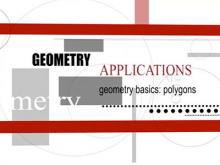
|
Applications of Polygons and Definition of a Polygon |

